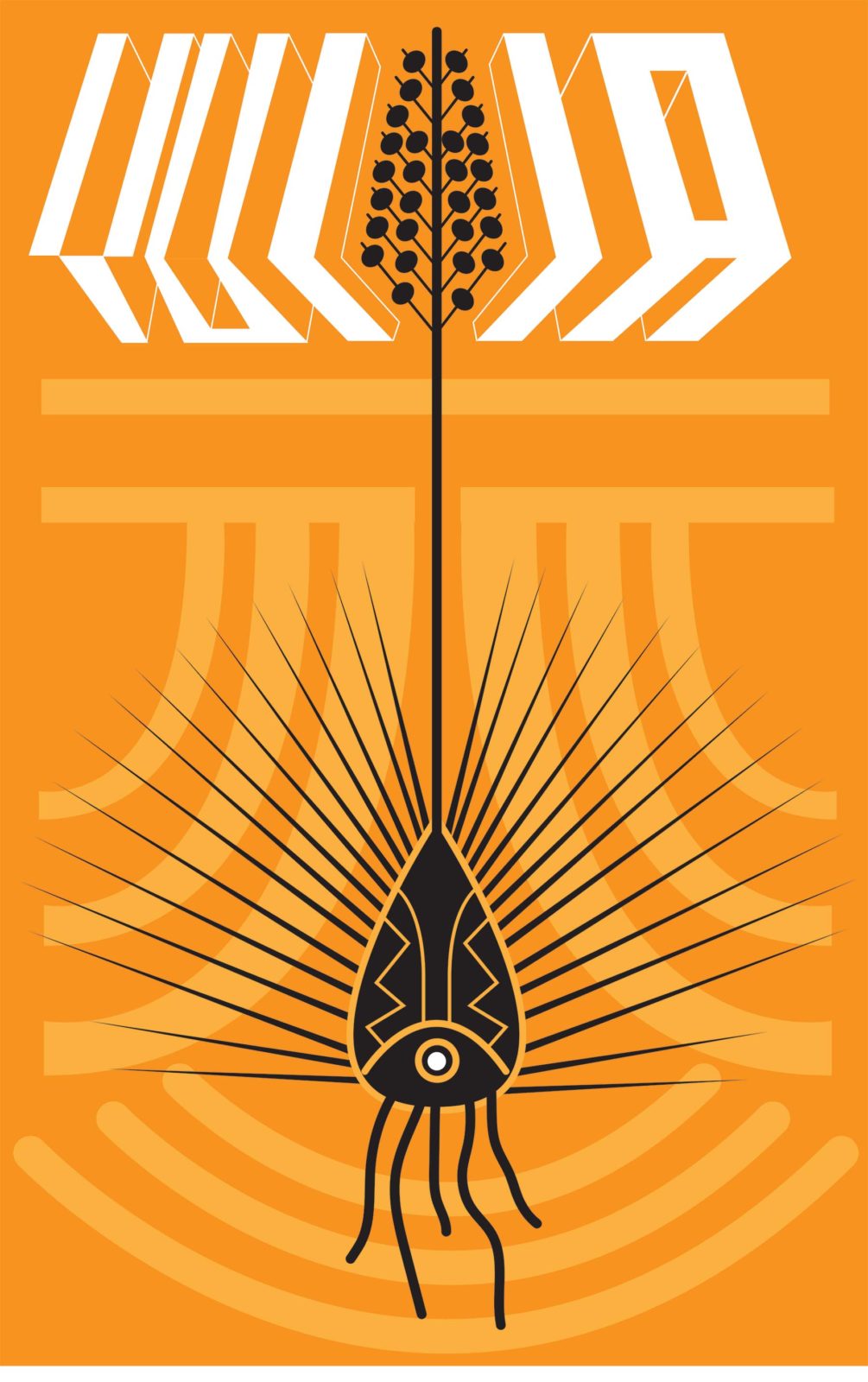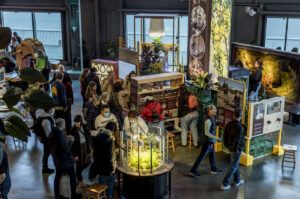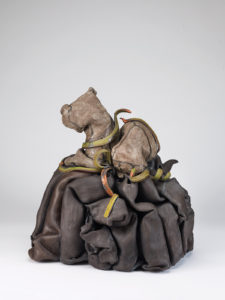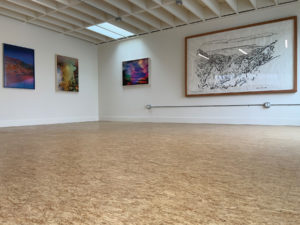
The David Brower Center’s call to artists for its 2022 annual juried exhibition looks different this year. Previous calls from the Berkeley-based environmental organization were often rather specific, seeking work about changes to the world’s oceans or work responding to the David Brower quote “Have a good time saving the world. Otherwise, you’re just going to depress yourself.” This year, for its planned exhibition series titled This Land, the call was accompanied by a brief prompt by José G. González, an educator, conservationist, artist, and founder of Latino Outdoors, encouraging artists to define their own relationships with land, as expansively as they saw fit.
The Brower Center hopes the change helps it move beyond what it calls a “white aesthetic and perspectives,” to draw more diverse artistic contributors.
Past exhibits have primarily featured white artists, and in turn, this has offered viewers an idea of nature that tends to favor the nonhuman or completely excludes humans. Whether intentionally or not, the white aesthetic can buttress the idea that nature and human culture are oppositional, a common idea in European traditions that’s antithetical to many non-Western thought systems. “Indigenous cultures of North America include human communities in their cultural equations of nature,” writes Enrique Salmón, a Rarámuri (Tarahumara) ethnobotanist and professor at Cal State East Bay. “To Indigenous people, humans are at an equal standing with the rest of the natural world; they are kindred relations.”
But much environmental art doesn’t depict this kinship or relationality. Laurie Rich, the Brower Center’s executive director, notes the center has exhibited some artists who create “images of these beautiful places but there’s no connection to the people that are actually there.”
The center’s 2019–20 exhibition of National Geographic photographer Joel Sartore’s “Photo Ark,” for example, shows a series of studio portraits of animals living in zoos and sanctuaries. In these photographs, the animals are completely isolated from other animals, plants, or land (whether zoos or natural habitats). González says he sees American culture’s emphasis on individualism over community in this kind of wildlife art. And more broadly, he sees the representation of beautiful places devoid of people as a legacy of colonial justifications for taking lands that were deemed unused or unpeopled, despite the Indigenous people who lived there.
González stresses that for him, empty landscapes or wildlife portraits are not bad in and of themselves. Instead of favoring that one perspective, though, González says, he would like to expand to include more. “When we talk about nature,” he says, “let’s really be expansive.” This is why Gonzálezcrafted the call for This Land to be open-ended rather than prescriptive, hoping to attract those who may not even think of their art as environmental art.
Rich describes the wake-up call she had as she was putting together a panel of artists in 2020, when an invitee said she wouldn’t be comfortable on the panel because all the other artists were white. Rich says the Brower Center realized afterward that it wouldn’t be enough to invite non-white community organizations to participate in the same artistic programming the center had always offered. The call for This Land is a small part of broader organizational changes, she says.
For example, for the center’s annual exhibition in collaboration with National Geographic, Rich says she is encouraging the National Geographic Society to produce traveling exhibitions of artists who challenge the white aesthetic and to include photographers who are not white men.
The center has also changed its artistic submission process. Previously, interested artists submitted work through a platform designed for professional artists, which required a CV, an artist statement, and a specific number of artworks—“inputs,” González says, that influence what art comes in. By redesigning the submission process to appeal to more than just professional artists, as well as translating it into Spanish, the center hopes to attract artists who might not have seen a place for themselves at the center before.
The jury that selects the participating artists has usually included a board member, a previously exhibiting artist, and staff from a partner organization or sponsor. Jury members were typically white, Rich says, further perpetuating an insular community. For This Land, the jury members are artists and art professionals of color from the Berkeley Civic Arts Commission, Sol Collective, Latino Center of Art and Culture, and La Peña Cultural Center. Of this jury, González recalls telling one skeptical artist, “I’m confident that different eyes will see your art that would not have seen it before.”




